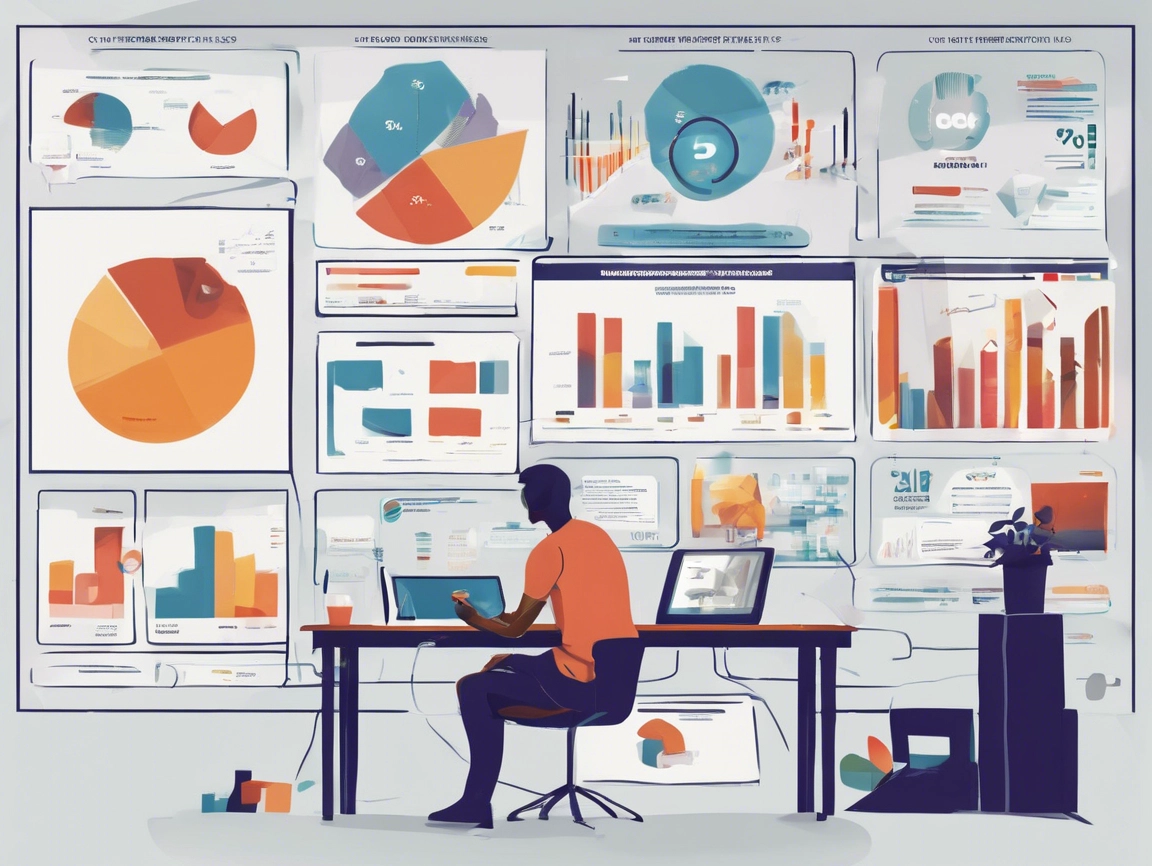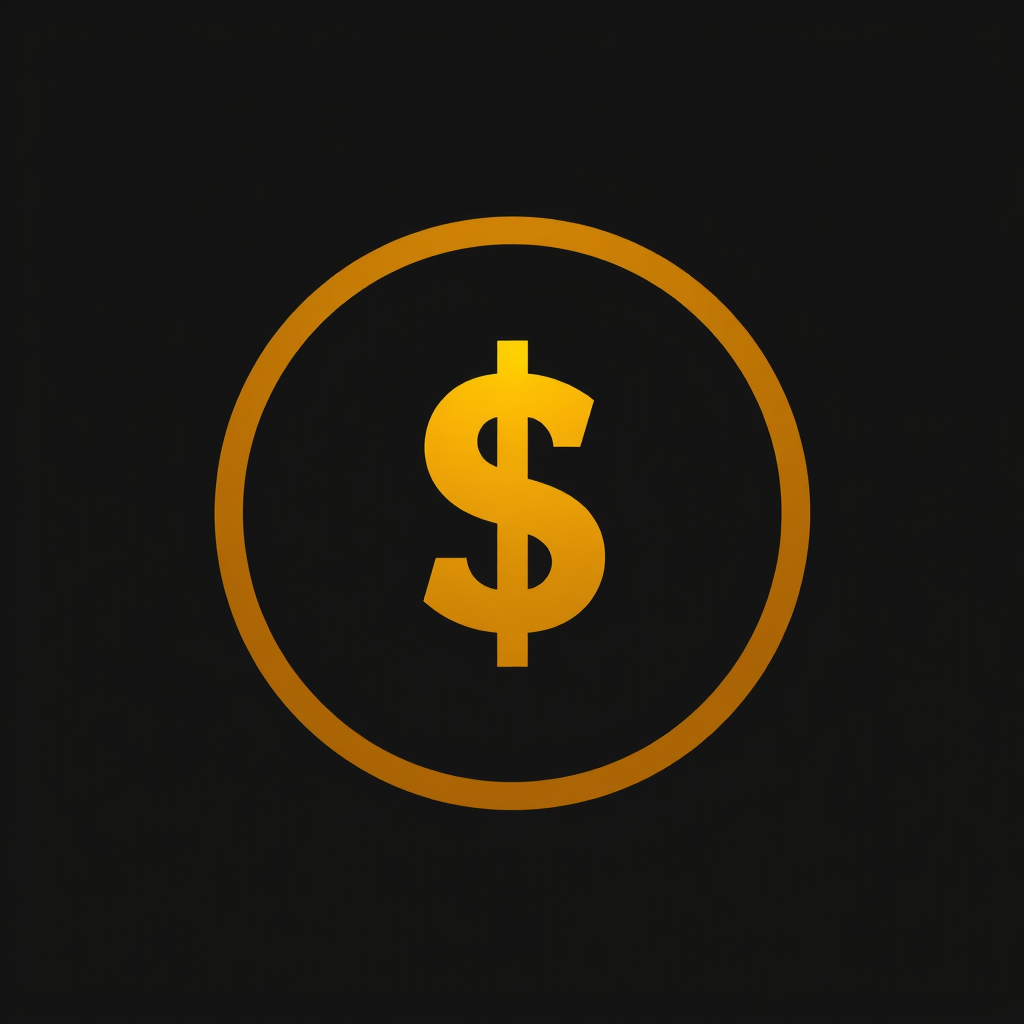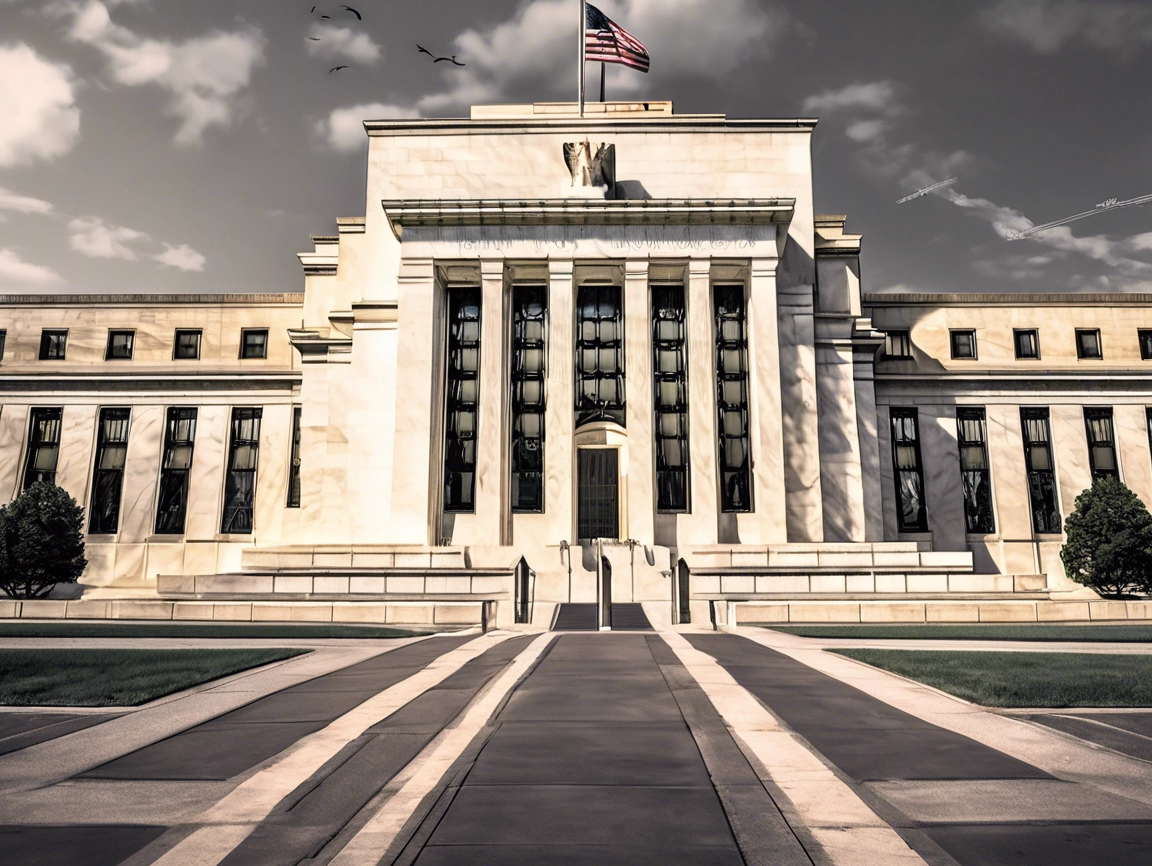By Cap Puckhaber, Reno, Nevada
I’m Cap Puckhaber, a marketing professional, amateur investor, part-time blogger, and outdoor enthusiast. Today on SimpleFinanceBlog.com, we break down the critical, interconnected relationship between the Federal Reserve, inflation, and interest rates, exploring how interest rates affect investments and what it all means for your investment portfolio. These aren’t just abstract macroeconomic topics floating around in the news; their movements have a direct and measurable impact on your mortgage, your retirement accounts, and your overall financial health. We’ll use the dramatic economic shifts of the early 2020s as a detailed case study to provide a timeless framework for understanding these powerful forces, so you can make informed decisions instead of emotional ones.
The Conductor of the Economy: What is the Federal Reserve?
You hear the name “the Fed” constantly, often discussed in serious, hushed tones on financial news channels. But what is it, really? Think of the Federal Reserve as the central bank of the United States. Its job isn’t to serve individual consumers like you or me—you can’t open a checking account there. Instead, its primary role is to serve as the conductor of the entire U.S. economy, and it does this with two main goals in mind, a responsibility known as its “dual mandate”:
- Achieving Maximum Employment: This means fostering economic conditions where everyone who wants a job can find one.
- Maintaining Stable Prices: This means keeping inflation under control, preventing the rapid erosion of your purchasing power.
It’s a delicate balancing act. Pushing for more jobs can sometimes heat up the economy and spark inflation. Conversely, fighting inflation too aggressively can slow the economy down and lead to job losses. The Fed’s main tool for navigating this challenge is the federal funds rate. This is the interest rate at which commercial banks lend their excess reserves to each other on an overnight basis.
While you’ll never pay this rate directly, it’s the bedrock upon which nearly every other interest rate in the country is built. When the Fed’s policy-making body, the Federal Open Market Committee (FOMC), decides to raise or lower this target rate, it creates a powerful ripple effect that eventually touches your credit card APR, your car loan, and your mortgage. For a powerful historical example, after holding this rate near zero (0.00%-0.25%) from March 2020 to March 2022 to stimulate the economy, the Fed executed its most rapid hiking cycle in four decades, raising the rate to over 5.25% by mid-2023 to combat a surge in inflation. This dramatic shift provides a perfect case study for how the Fed’s actions cascade through the financial system.
Decoding the Inflation Story: Why Everything Got So Expensive
We all have a personal story about inflation from the past few years. It’s the reason a $100 grocery trip suddenly felt like it only bought half of what it used to. It’s the jaw-dropping price of a used car. This erosion of purchasing power was a global phenomenon, but in the U.S., it was a perfect storm. The post-2020 economy was hit with snarled global supply chains, massive government stimulus programs that put cash directly into people’s pockets, and a surge of pent-up consumer demand.
As an amateur investor and someone who has to manage a household budget, I saw this firsthand. The spreadsheets I used to track my expenses started looking a lot different, with categories like “food” and “gas” swelling month after month. It wasn’t just a feeling; the data was stark. To track this, economists and savvy investors watch two key numbers very closely.
The Consumer Price Index (CPI): Your Official Cost of Living
The Consumer Price Index (CPI) is the most widely cited measure of inflation. It tracks the average change over time in the prices paid by urban consumers for a market basket of goods and services. Think of it as the government’s official shopping list, including everything from rent and electricity to hamburgers and haircuts. After the stimulus period of the early 2020s, the CPI peaked at a 40-year high of 9.1% in June 2022. This alarming number was a clear signal that the economy was overheating and that the Fed needed to take decisive action. The subsequent rate hikes helped cool inflation down significantly, with the CPI falling below 4.0% by early 2024. While this was a major improvement, it remained stubbornly above the Fed’s traditional 2% target, explaining the central bank’s cautious stance on cutting rates.
You can view a historical chart of the CPI on FRED here: https://fred.stlouisfed.org/graph/?g=1wmdD
The Producer Price Index (PPI): A Glimpse into the Future
The Producer Price Index (PPI) is the other side of the inflation coin. It measures the average change in selling prices received by domestic producers for their output—essentially, it’s wholesale inflation. I like to think of the PPI as a leading indicator. If the costs for manufacturers and producers go up (for raw materials, energy, and labor), they will almost certainly pass those higher costs on to consumers down the line. The good news here is that the PPI showed significant easing well before the CPI did. It peaked at over 11% in 2022 but fell sharply into the low single digits by 2024. This signaled that the intense cost pressures on businesses were finally lightening up, a necessary prerequisite for more stable consumer prices ahead.
The Ripple Effect: How Fed Policy Hits the Real World
When the Federal Reserve raises its key interest rate from near-zero to over 5% in just over a year, it’s not a theoretical exercise for economists to debate. It’s a deliberate action designed to make borrowing money more expensive across the entire economy. The goal is to slow down spending, cool demand, and bring inflation back under control. Here’s how that cause-and-effect relationship plays out in ways that directly affect your life and finances.
The Direct and Painful Impact on Your Mortgage
Nowhere is the Fed’s impact felt more acutely than in the housing market. If you were looking to buy a home during the 2021-2023 period, you experienced a true shock. Average 30-year fixed mortgage rates, which are not set directly by the Fed but are heavily influenced by its policy and by the bond market, soared from historic lows under 3% in 2021 to over 7.0% by late 2023.
Let’s quantify that. On a $350,000 loan, a 3% interest rate results in a principal and interest payment of roughly $1,475 per month. At a 7% interest rate, that same monthly payment jumps to $2,330. That’s an increase of over $850 every single month. This drastic increase in cost didn’t just make buying a home more expensive; it pushed homeownership out of reach for many Americans and brought a red-hot housing market to a screeching halt. The same principle applies to other major purchases, with auto loan rates and credit card APRs also hitting multi-year highs.
You can view a historical chart of mortgage rates on FRED here: https://fred.stlouisfed.org/series/MORTGAGE30US
The Slowdown in Business and the Job Market
This “ripple effect” isn’t just a phrase; it’s a measurable economic slowdown. Higher interest rates increase the cost of capital for businesses of all sizes. A local construction company will find it more expensive to get a loan for a new excavator. A major tech firm will face higher costs to issue bonds to fund its research and development. Consequently, companies become more cautious. They delay expansion plans, pull back on investments, and slow down hiring.
We can see this reflected in key economic data. The ISM Manufacturing PMI, a critical index of business activity, spent many months during 2023 below the 50-point threshold that separates economic growth from contraction. As businesses slow down, the labor market inevitably feels the strain, which can lead to a rise in the unemployment rate. The Fed’s stated goal is always a “soft landing”—slowing inflation without causing a major recession—but history shows this is incredibly difficult to achieve. The risk of over-tightening is why fears of a recession so often accompany these rate-hike cycles.
Connecting Policy to Your Portfolio: What This Means for Your Investments
Your investment portfolio, whether it’s a 401(k), an IRA, or a personal brokerage account, is highly sensitive to these powerful economic shifts. The connection between interest rates, inflation, and the value of your assets is direct, predictable, and quantifiable. Understanding this relationship is the key to navigating volatile markets with a steady hand.
The Stock Market’s Predictable Reaction
Generally, the stock market does not like interest rate hikes. The logic is straightforward:
- Higher Borrowing Costs: As we’ve discussed, it becomes more expensive for companies to borrow money to fund growth, buy back stock, or acquire competitors. This can directly lead to slower earnings growth.
- The “Discounting” Effect: In finance, a company’s stock price is theoretically the present value of all its future earnings. When interest rates are high, those future earnings are “discounted” at a higher rate, making them worth less in today’s dollars.
- Competition from Bonds: This is a big one. When you can get a nearly risk-free return of 4% or 5% from a government bond, a riskier stock needs to offer a much higher potential return to be attractive. As the 10-year U.S. Treasury yield rose from under 1% in 2020 to over 4.5% by 2023, it provided a viable, low-risk alternative to stocks for the first time in over a decade. This pulls money out of the stock market and into the bond market. For more on this, Investopedia offers a great breakdown of how to approach investing during inflationary periods.
This dynamic has a disproportionate effect on different market sectors. Growth-oriented technology stocks, whose high valuations are often based on the promise of distant future earnings, tend to get hit the hardest. In contrast, stable, dividend-paying “value” stocks in sectors like utilities and consumer staples often show more resilience because they generate consistent cash flow regardless of the economic climate. We saw this play out clearly as the tech-heavy NASDAQ index fell more severely during the 2022 rate hikes than the broader S&P 500.
You can view a chart comparing the S&P 500 to the Fed Funds Rate here: https://fred.stlouisfed.org/graph/?g=A8yQ
The Inverse World of Bonds
Bonds are often seen as the “safe” part of a portfolio, but their relationship with interest rates is crucial to understand. It’s an inverse relationship: when interest rates rise, the prices of existing bonds fall.
Here’s an analogy. Imagine you own a special “coupon bond” that pays you $20 every year. You paid $1,000 for it, so it has a 2% yield. Now, imagine the issuer starts selling new $1,000 coupon bonds that pay $50 a year (a 5% yield) because general interest rates have gone up. Suddenly, your 2% bond doesn’t look so attractive. If you wanted to sell your bond, no one would pay you the full $1,000 for it when they could get a new one that pays more. You would have to sell your bond at a discount—say, for $950—to make its yield competitive with the new bonds. This is the fundamental principle of bond price sensitivity to interest rates.
A Timeless Strategy for Building a Resilient Portfolio
Understanding these complex dynamics is the first and most important step. It allows you to build a resilient financial plan based on principles, not panic. Instead of reacting to scary headlines, you can make proactive, strategic decisions designed to weather any economic storm.
For the Long-Term Investor (Retirement Planners)
If your investment horizon is ten years or more, your greatest advantages are time and consistency. History has shown, without a doubt, that the most reliable way to destroy wealth is to panic-sell during a market downturn. The best course of action is often the most boring: stay the course. Periods of market decline are actually opportunities. By continuing to invest consistently through a strategy known as dollar-cost averaging, you automatically acquire more shares when prices are low. This systematically lowers your average cost per share over time. NerdWallet has an excellent, easy-to-understand guide on this powerful strategy.
This is also the perfect time to review your portfolio’s diversification. True diversification means owning a mix of assets that don’t all move in the same direction at the same time. It’s not just about owning 20 different tech stocks. It’s about owning a mix of U.S. stocks, international stocks, and bonds. A well-diversified portfolio is your best defense against volatility. For a deeper dive, Morningstar provides a comprehensive guide on building a diversified portfolio.
A Deeper Look at Asset Allocation and Rebalancing
Before we get to the specific bullet points, we need to cover two of the most important concepts in long-term investing: asset allocation and rebalancing. These terms might sound like jargon, but the ideas behind them are simple and are the true foundation of a resilient investment plan.
What is Asset Allocation?
Asset allocation is simply how you decide to divide your investment portfolio among different asset categories, primarily stocks and bonds. Think of your portfolio as a pie. Your asset allocation is the recipe that tells you how big each slice of the pie should be.
- Stocks (or equities) represent ownership in a company. They offer higher potential for long-term growth but come with higher risk and volatility.
- Bonds are essentially loans you make to a government or corporation. They typically offer lower returns than stocks but are generally safer and less volatile, providing stability to your portfolio.
There is no single “correct” allocation for everyone; it’s deeply personal and depends on your age, financial goals, and risk tolerance. However, a common guideline is the “Rule of 110.” You subtract your age from 110, and the result is the percentage you should consider allocating to stocks.
- Example: A 30-year-old investor might have an 80% stock / 20% bond allocation (110 – 30 = 80).
- Example: A 60-year-old investor nearing retirement might have a 50% stock / 50% bond allocation (110 – 60 = 50).
The key idea is that when you are younger, you have more time to recover from market downturns, so you can afford to take on more risk (a higher stock allocation) for greater growth potential. As you get older, your focus shifts toward preserving your capital, so you increase your allocation to safer bonds.
If this sounds too complicated, target-date funds (offered by firms like Vanguard, Fidelity, and Schwab) are an excellent solution. You simply pick a fund with a year close to your expected retirement date (e.g., “Target Retirement 2055”), and the fund automatically manages an age-appropriate asset allocation for you.
What is Rebalancing?
Once you have your target allocation (let’s say it’s 60% stocks and 40% bonds), you can’t just set it and forget it forever. Over time, the market’s movements will cause your allocation to drift. This is where rebalancing comes in.
Rebalancing is the act of periodically buying or selling assets in your portfolio to get back to your original target allocation.
Let’s continue with our 60/40 portfolio example. Imagine stocks have a fantastic year and your bonds stay relatively flat. At the end of the year, your portfolio might have drifted to be 70% stocks and 30% bonds. You are now taking on more risk than you originally intended.
To rebalance, you would sell 10% of your stocks (locking in those gains) and use the proceeds to buy more bonds. This brings your portfolio back to your desired 60/40 mix. It’s a disciplined, unemotional process that forces you to sell high and buy low.
How Do Interest Rates Affect Your Rebalancing Strategy?
Your rebalancing actions will feel different depending on the economic environment, which connects directly to our discussion about the Fed and interest rates.
- In a High-Interest-Rate Environment (Like the 2022-2023 Period): During these times, stocks may struggle while the yields on new bonds and high-yield savings accounts become very attractive. Your portfolio might drift from 60/40 stocks-to-bonds to 55/45. Rebalancing here means selling some of your outperforming bonds (or using cash) to buy stocks at their lower prices. This can feel psychologically difficult—you’re buying the asset that has been performing poorly—but it is the core of the “buy low” discipline. It positions you to benefit when stocks eventually recover.
- In a Low-Interest-Rate Environment (Like the 2010s): In this scenario, stocks likely delivered strong returns while bonds yielded very little. Your 60/40 portfolio would have probably drifted to 70/30 or even 75/25 stocks-to-bonds. Rebalancing here means selling some of your high-flying stocks to buy more of the underperforming bonds. This also feels counterintuitive—why trim your winners? The reason is risk management. It forces you to take profits and reduce your portfolio’s risk after a long run-up, preventing you from being overexposed before a potential market correction.
Actionable Bullet Points for Long-Term Success:
- Automate Your Investments: Set up automatic monthly contributions to your 401(k) or IRA. This enforces the discipline of dollar-cost averaging and takes emotion out of the equation.
- Rebalance Annually: Once a year, review your asset allocation. If stocks have had a great year and now make up too much of your portfolio, sell some and buy more bonds to get back to your target mix. This forces you to sell high and buy low.
- Focus on Low-Cost Index Funds: For the core of your portfolio, you can’t go wrong with low-cost, broadly diversified index funds that track benchmarks like the S&P 500 or a total world stock market index.
For the Cautious Investor and Those Nearing Retirement
If you are closer to retirement or simply have a lower tolerance for risk, your priorities shift from aggressive growth to capital preservation and income generation. The first step is always to ensure you have a robust emergency fund—at least 3 to 6 months of essential living expenses—held in a liquid, high-yield savings account.
Next, aggressively tackle high-interest debt. Because credit card APRs are often directly tied to the Fed’s prime rate, every rate hike makes that debt more expensive. Paying down a credit card with a 22% interest rate is equivalent to earning a 22% guaranteed, risk-free return on your money. In your investment portfolio, this environment favors high-quality corporate bonds and the stocks of stable, blue-chip companies with a long history of paying and increasing their dividends. These companies tend to have strong balance sheets and operate in defensive sectors that are less sensitive to economic cycles.
Actionable Bullet Points for Stability and Preservation:
- Build a Bond Ladder: Instead of buying one big bond, you can build a “ladder” by purchasing several smaller bonds with different maturity dates (e.g., 1-year, 2-year, 3-year). As each bond matures, you can reinvest the principal into a new, longer-term bond if rates are favorable. This strategy helps manage interest rate risk.
- Scrutinize Dividend Stocks: Don’t just chase the highest yield. Look for “dividend aristocrats”—companies in the S&P 500 that have increased their dividends for at least 25 consecutive years. This demonstrates a durable business model and a commitment to shareholder returns.
- Consider Your Cash: In a high-interest-rate environment, cash is no longer trash. High-yield savings accounts and short-term Treasury bills can offer attractive, low-risk returns, providing a safe harbor while you wait for market conditions to improve.
Final Thoughts
The intricate dance between the Federal Reserve, inflation, and interest rates is the engine that drives our economy and the financial markets. It can feel complex, and the constant barrage of news about market volatility and potential recessions can be unnerving. But by understanding the clear cause-and-effect relationships—that a Fed rate hike leads to higher borrowing costs, which slows business activity and makes safer assets more attractive—you can see past the noise. You can finally understand why your mortgage rate is high and why the stock market is shaky. This knowledge transforms you from a worried passenger into a confident pilot of your own financial plan. A well-thought-out strategy, a long-term perspective, and the discipline to remain consistent are your most powerful assets in this environment. This framework provides the tools necessary for sound financial decision-making.
Check out my latest blog on Best Investing Podcasts for Beginners by Cap Puckhaber
If you haven’t seen it yet check out my blog on Systematic vs Unsystematic Risk by Cap Puckhaber
New to Simple Finance Blog is my take on Generate Income from Investments by Cap Puckhaber
Cap Puckhaber breaks down AI and the potential for a bubble or a breakthrough
Investing Blog for Beginners
Hosted by Cap Puckhaber of Black Diamond Marketing Solutions, this investing blog offers daily articles on investing, savings, bonds, interest rates, mortgages, and more.



About the Founder / Author
Cap Puckhaber is a seasoned marketing strategist and finance writer, based in Reno, Nevada with over 20 years of experience investing, marketing and helping small businesses grow.
He offers expert advice on how to save for retirement, how to use a retirement calculator and the difference between T-Bills and CDs.
Cap Puckhaber shares actionable insights on how to promote your business locally for free and on trending platforms like X.
He shares his personal investment journey, how to use trade volume to predict breakouts, and his take on covered call strategies.

Follow Cap Puckhaber Online
Connect with Cap Puckhaber on Facebook
See Real-Time Thoughts on X
Read In-Depth Articles on Medium
Subscribe to Cap Puckhaber’s Substack Newsletter
Follow Cap Puckhaber’s Company Page on LinkedIn
View Our Agency Profile on DesignRush
See Cap Puckhaber’s Agency on Agency Spotter
Explore Technical Projects on GitHub
See Cap Puckhaber’s Creative Portfolio on Behance
Learn more about my company on Crunchbase
Join Cap Puckhaber’s Conversation on BlueSky
Follow My Updates on Mastodon

Backpacker, Marketer, Investor, Blogger, Husband, Dog-Dad, Golfer, Snowboarder
Cap Puckhaber is a marketing strategist, finance writer, and outdoor enthusiast from Reno, Nevada. He writes across CapPuckhaber.com, TheHikingAdventures.com, SimpleFinanceBlog.com, and BlackDiamondMarketingSolutions.com.
Follow him for honest, real-world advice backed by 20+ years of experience.


